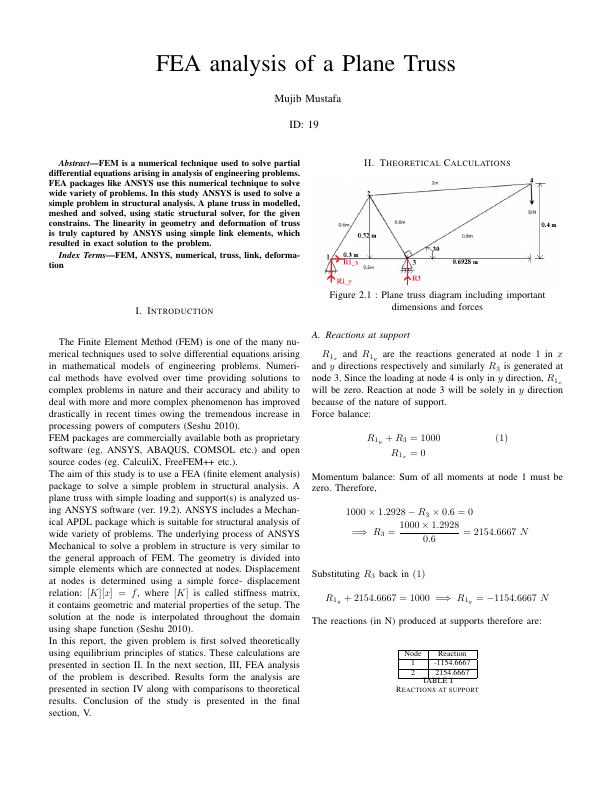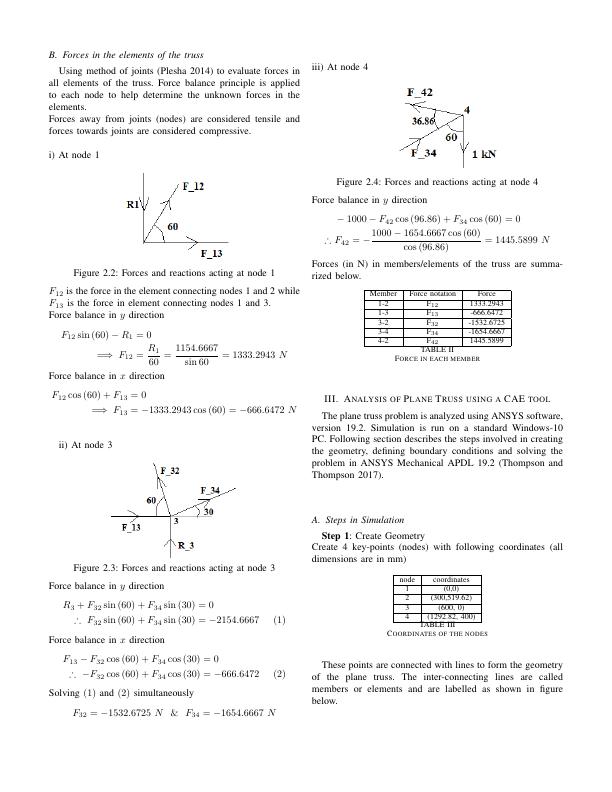FEA Analysis of a Plane Truss
This resit coursework consists of two sections: Mathematics and Finite Element Analysis (FEA). The Maths part is worth 25% of the mark, and the finite element part is worth 75% of the mark. BOTH PARTS NEED TO BE SOLVED
4 Pages2065 Words287 Views
Added on 2022-11-29
About This Document
This article discusses the Finite Element Analysis (FEA) of a plane truss using ANSYS software. It covers the theoretical calculations, steps involved in the analysis, and the results obtained. The accuracy and effectiveness of FEM in solving structural problems are also explored.
FEA Analysis of a Plane Truss
This resit coursework consists of two sections: Mathematics and Finite Element Analysis (FEA). The Maths part is worth 25% of the mark, and the finite element part is worth 75% of the mark. BOTH PARTS NEED TO BE SOLVED
Added on 2022-11-29
ShareRelated Documents
End of preview
Want to access all the pages? Upload your documents or become a member.
Solution for Nodal Displacements and Rotations in Frame Structure
|14
|1096
|98
Finite Element Method (Part 1) EG55M1 Assignment 1 - University of Aberdeen
|11
|1996
|124


